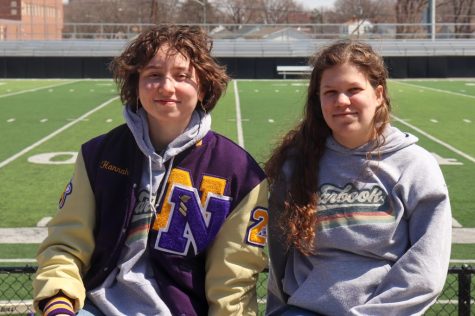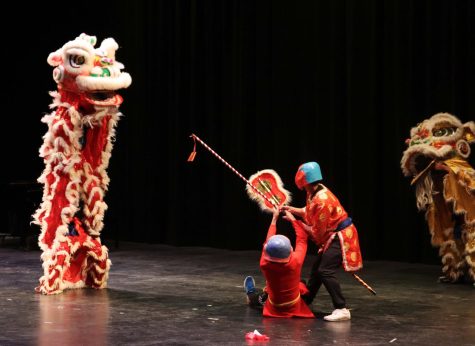NKC Cheer
Many families laugh together, live together, eat together, cry, fight, and even celebrate together. Similarly, cheerleaders from North Kansas City High School have also banded together, creating a team that some members consider to be like a family.
One cheerleader, junior Morgan Hutchison agreed that the cheer team could be viewed as something like family. She explained many commonalities, such as having a good time and laughing, and even having disagreements.
“We have bicker moments like any family,” she said, “but we’ll always be there for each other.”
Another cheerleader, senior Viviana Lopez, commented that, “we’re all really close in many ways. We have a lot of cheer sleepovers, and we also have a lot of inside jokes.”
Aside from explaining their close-knit team, Hutchison also focused on the amount of work that cheerleading requires.
“Our practices are probably a lot longer than other sports,” explained Hutchison. “We run, and have summer practice. We’re up so early, even before [the] volleyball [team] gets there,” she commented.
Often times, many people overlook the intensity and high demands of a considerably controversial sport such as cheerleading.
“It’s a lot of endurance and stamina, and it’s a required skill. Not everyone can throw up a stunt,” explained junior Adrian Folton, another member of the cheer team.
Hutchison even explained that the sport has challenged her physically; “You have to compete for your spot on the team,” she said. “I’m shorter than others, so you wouldn’t expect that I’m a base.”
In addition to being physically challenging, at times cheer also provides mental challenges that cheerleaders have to push through.
Folton explained that, “it’s a technical sport, it’s not something you can space off during. You have to be attentive.”
Being attentive is a great factor to safety in cheer. Many stunts and routines solely rely on the skills of the cheerleaders.
“The key thing is to trust your bases, and trust your stunts,” said Folton. “That’s the only way to protect against injury.
It may come as a surprise the number of injuries that cheerleaders get throughout the season.
“It’s stressful and it hurts. [During practice] you get shoe burns, like a shoe hicky on your arm,” Hutchison said.
Folton listed some injuries he attained through his years on the cheer squad; “My first year I tore my meniscus, and soon acquired shoulder instability. This year I fractured my back, [which] has put me out now.”
Many other members of the cheer team have suffered injuries, or endured pain because of what is required of them.
“Tumbling is very challenging. It takes a lot of practice, and there’s a lot of falling,” said Lopez.
“It’s risky, it’s dangerous,” Folton said describing cheer. “We throw people up in the air, and we drop people. We have no protection, [padding] like football players.”
The dangers and injuries that encompass cheerleading are hardly avoidable due to the events of the sport itself, however, in order to help minimalize the dangers, entrusting members of the team play a large role in maintaining safety.
The close-knit, family-like element that many of the members of cheerleading have established with one another helps with trust and creates bonds that benefit safety as well.
“It’s more than just a family, we’re all really comfortable with eachother…the key thing is trust,” said Folton.





